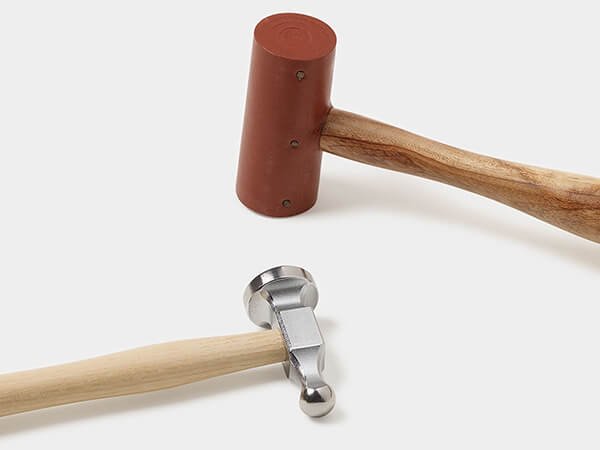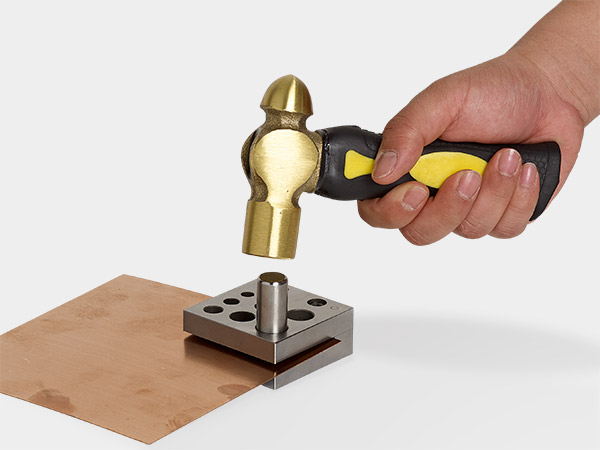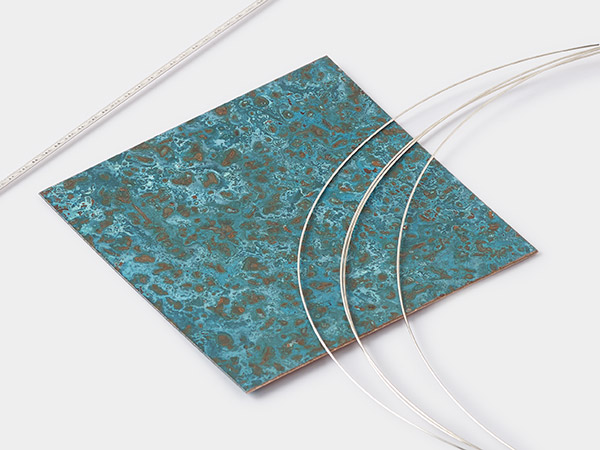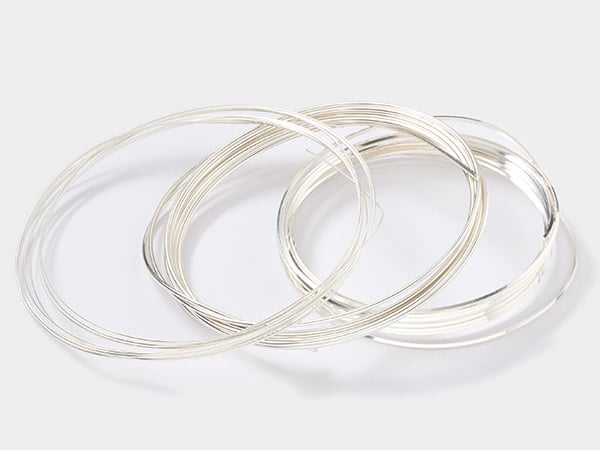Getting Started with Hammers
Discover how to choose the perfect hammer for each jewelry-making project with Patti in this product spotlight video. She introduces the chasing hammer, mallet, texture hammer, and ball peen hammer to help you select the right tool for every job.

A lot of thought goes into the construction of a hammer—everything from the weight and shape of the head to the length and material of the handle. Each feature plays a vital role in how the tool performs. When selecting a hammer for jewelry-making, it's important to consider the following factors:
- Weight: Lighter hammers are ideal for fine, delicate work or thin metals, while heavier hammers are better suited for thick metals and more demanding tasks.
- Balance: A well-balanced hammer will not only deliver more accurate blows but also reduce wrist strain.
- Handle: The handle should feel comfortable in your hand and be proportional to the hammer's head. Wooden handles can be sanded for a customized fit. Holding the hammer farther back on the handle provides better control and reduces wrist fatigue.
Maintenance Tips
Any imperfections on the hammer’s face will transfer to your metal. To avoid unwanted marks, polish the face of a steelhead hammer using sandpaper and polishing paper.
Mallets
Mallets deliver a solid blow without stretching or marking the metal, making them perfect for ring sizing on a mandrel, forming wire, and work-hardening metal. Heavier mallets can also be used for tasks like applying force to dapping punches or flattening metal.
- Head: Made from materials like treated rawhide, hard nylon, rubber, or wood.
- Handle: Typically made from hardwood.
- Assembly: The head is attached to the handle, often glued in place.
- Modification: Mallets are ready to use right out of the packaging and are long-lasting tools.
Specialty Hammers
With careful use, some hammers can serve multiple functions as you build your tool collection. For instance, the round end of a ball peen hammer is great for adding texture to metal, while the flat end can strike metal punches.
Remember to maintain a smooth, clean surface on your hammer faces. Any nicks or scratches can transfer to your metalwork, so keeping your tools in good condition saves time in the long run.
Texture Hammer
With two built-in textures, these hammers allow you to easily add dimension to metal sheets or drops.
Shop for Your Materials Here:
Have a question regarding this project? Email Customer Service.
Copyright Permissions
All works of authorship (articles, videos, tutorials and other creative works) are from the Fire Mountain Gems and Beads® Collection, and permission to copy is granted for non-commercial educational purposes only. All other reproduction requires written permission. For more information, please email copyrightpermission@firemtn.com.







